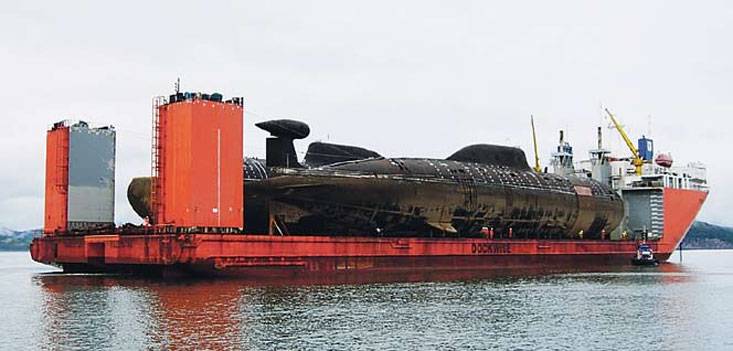Underwater rain
May 20, 1940 issued a decree of the Defense Committee under the Council of People's Commissars of the USSR on the transfer of one submarine from the Northern fleet to the Pacific Ocean. On May 23, in accordance with the order of the People's Commissar of the Navy No. 00120, a special purpose expedition (EON-10) began to be formed to transfer the Shch-423 submarine from Polyarny to Vladivostok by the Northern Sea Route to navigation. On June 14, by order of the People's Commissar of the Navy No. 00145, the experienced submarine captain of the 423rd rank Ismail Zaydulin was appointed commander of the submarine Shch-3. To the honor of the organizers, we note that there was no “Pass at any cost” slogan - it was also understood that in the Arctic everything rarely works out as planned. For the entire period of the passage along the Northern Sea Route, a supporting vessel was appointed - the Anatoly Serov transport, on which a distiller and a VHF station were specially installed. In its capacious holds, in addition to 250 tons of expeditionary cargo, fuel, emergency and subversive equipment, as well as additional artillery ammunition for the submarine, a special cockpit was arranged for 36 places for recreation of submariners during short parking or in case of emergency wintering.

The boat, in addition to the “Serov”, was accompanied at different stages by one or two icebreakers. As soon as the ice began, the submariners, in addition to the expected problems when moving at the slowest course among the ice floes, had an unpleasant situation with condensate. Due to the large temperature difference between outboard and cut-off air, the fogging inside the strong hull turned out to be so strong that in the compartments it looked more like a light rain that went round the clock.
October 17 1940 U-423 approached the pier of submarines of the Pacific Fleet in the Golden Horn Bay of Vladivostok, passing 73 miles (including 7227 in ice) miles through two oceans and eight seas in 682 days. The task of the motherland was completed.
During the war years, to the best of our knowledge, the experience of a serial “pike” transpolar transition was not used, but already at the end of the 40-s, the submarines conducted caravans at the Northern Sea Route.
With the advent of submarines, the entire water area of the Arctic Ocean became available, but the exchange of boats between the Pacific and Northern fleets still turned out to be possible only in limited periods - due to the shallow water in the Bering Strait region, a part of the huge Arctic transition still has to be overcome in the surface position Therefore, the 2014 expedition of the year to transfer two submarines, the Bratsk and Samara, from Avacha Bay (Kamchatka) to Severodvinsk, can be considered a unique expedition to transfer two nuclear submarines, Bratsk and Samara, by order of the Russian Defense Minister. Since the boats were sent for repairs and deep modernization, a special semi-submersible vessel “Transhelf” (Netherlands) was hired for transportation, which was used to transport oil-producing platforms. Submarines were loaded aboard 23 August 2014. The icebreakers 50 of the Victory and Vaigach accompanied the transport. I must say that the time for the expedition was chosen successfully: the ice situation was favorable and after about a month the nuclear-powered ships were at their destination.
Information